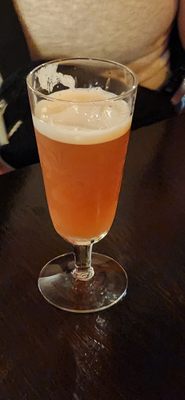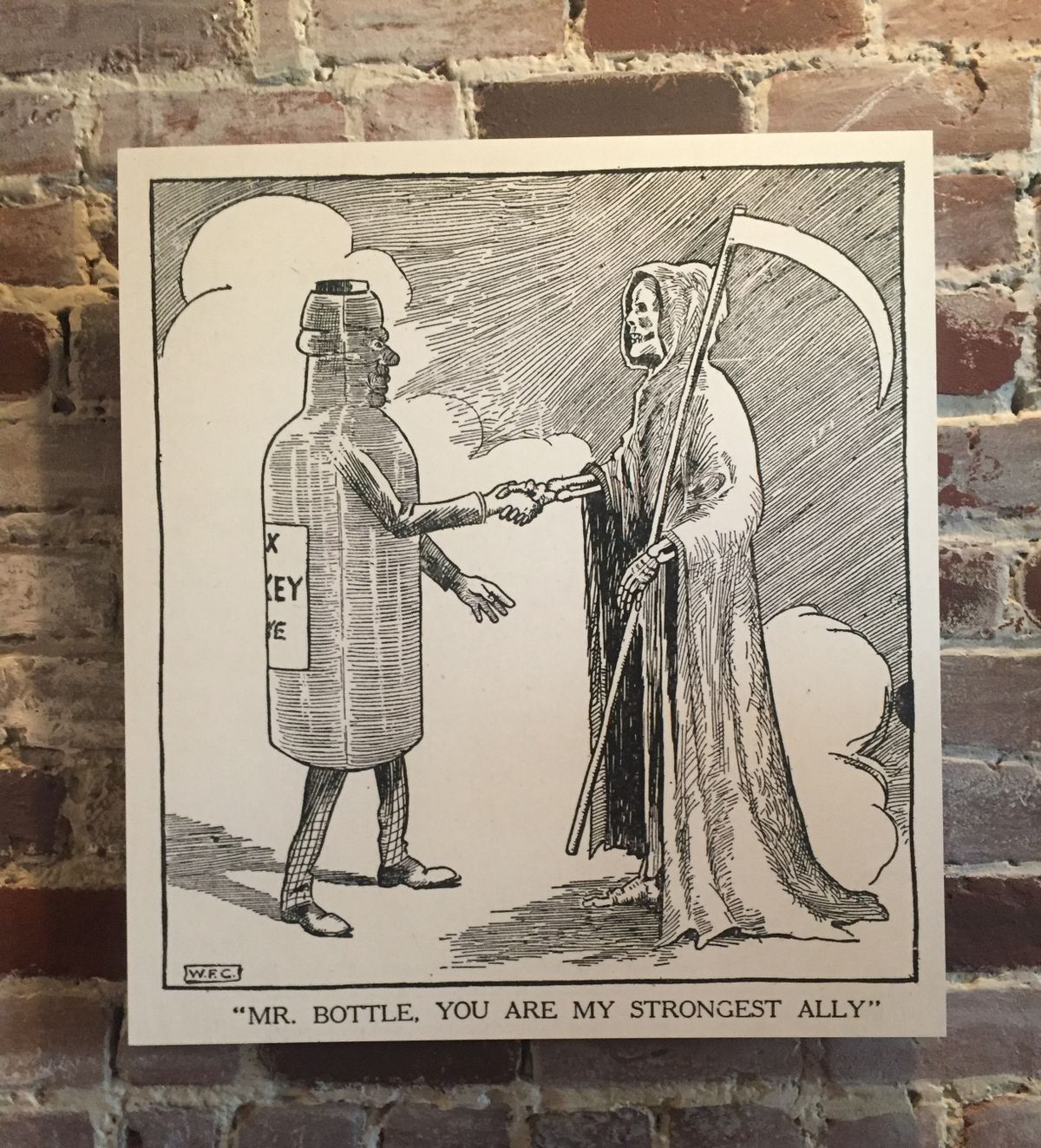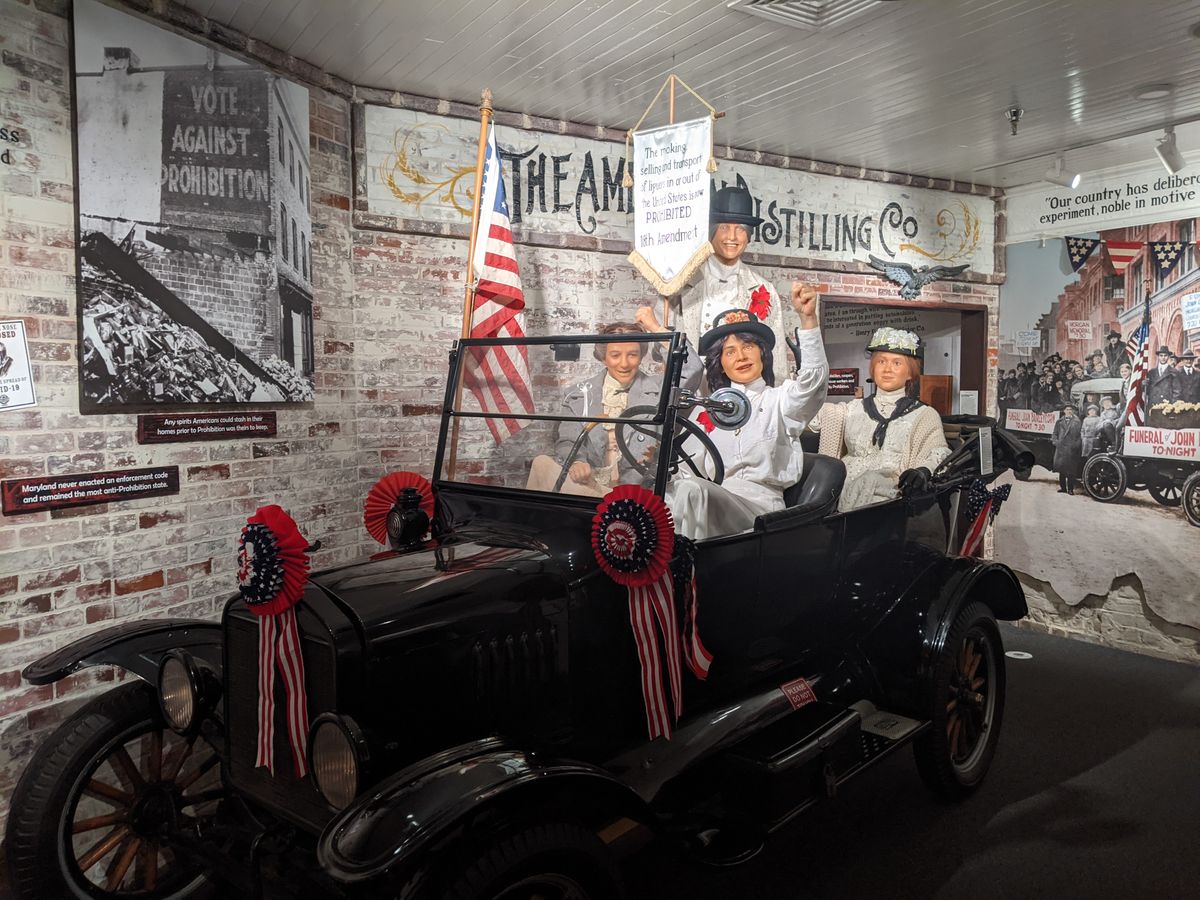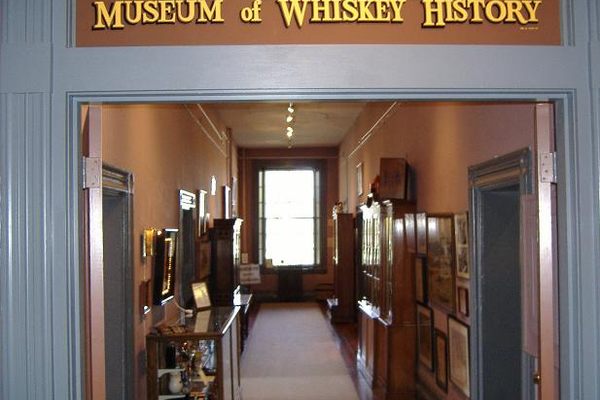About
When the 18th Amendment to the U.S. Constitution outlawed alcohol as a deleterious delectation in 1920, it was the culmination of more than a century of campaigning by the national temperance movement. The American Prohibition Museum in Savannah, Georgia, follows the complex history of this movement, from its early days through the consequences of the 21st Amendment, which ended Prohibition in 1933.
Impressively, the museum entertains without being corny and educates without being preachy or pedantic. Visitors are greeted in the entrance by a Model T beer truck and myriad slogans, headlines, and “saloon art” that set the stage for the national debate. To reach the main exhibit halls on the second floor, one must climb a stairwell plastered with quotations on drinking and alcoholism and listen to an evangelical preacher proclaim the evils of liquor in a historical film.
Appropriately enough, the museum's story of Prohibition begins in a saloon, where a mannequin of the famous and fierce temperance advocate Carry Nation wields a hatchet over the bar (Nation was notorious for destroying saloons' property with the weapon). Meanwhile, history comes alive as performing docents, dressed like barkeeps and flappers, answer questions and share saucy tales.
Another exhibit covers the various illegal workarounds to Prohibition with the dark stillness of a moonshiner’s hideaway followed by a well-lit bootlegger tableau replete with weapons confiscated from mobsters. To avoid the gangster racket, you can escape into a nearby speakeasy, if you know the password. Once inside, guests can drink 1920s cocktails while listening to music from the golden age of jazz.
The museum is remarkably comprehensive. All the usual suspects from popular perceptions of Prohibition are present, but the museum is also adept at interweaving Savannah’s local history into the chronicle while also revealing the many less obvious effects of Prohibition. For example, the engineering of cars was radically altered and improved as a result of creating faster and stronger bootlegger vehicles to outmaneuver G-men (slang for "government men," or agents). Meanwhile, speakeasies paved the way for greater racial integration. There were, of course, negative effects, too: Nativism increased as Irish whiskey distillers and German beer brewers were targeted as lawbreakers.
Related Tags
Know Before You Go
The museum is open daily from 10:00 a.m. to 5:00 p.m, with the last entry at 4:15 p.m. Tickets for cocktails in the bar should be purchased before entering. Prohibition shot glasses from the gift shop make excellent souvenirs.
Pets are not allowed in the museum.
Community Contributors
Added By
Published
November 26, 2018























































































